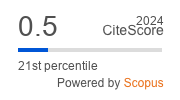Discussion questions about community-acquired pneumonia in children
Abstract
This article discusses methods of diagnosis and treatment of community-acquired pneumonia in children, focuses on the practical issues of etiology and symptoms of the disease.
About the Authors
N. A. GeppeRussian Federation
Nataliya Anatolievna Geppe, MD, honoured doctor of Russia, director of the Research and educational clinical centre «Healthy Child», prof., head of the chair of childhood diseases
19 B. Pirogovskaya str., Moscow, 119435
8 (499) 248–64–79
A. B. Malakhov
Russian Federation
MD, prof. of the chair of childhood diseases
I. K. Volkov
Russian Federation
MD, prof. of the chair of childhood diseases
I. A. Dronov
Russian Federation
PhD, associate prof. of the chair of childhood diseases
References
1. Community-acquired pneumonia in children: prevalence, diagnosis, treatment, prevention. Scientifi c and practical program. M.: «Original-maket». 2010. 64 p.
2. Morozova O.I., Morozova N.V., Ostrovskaya O.V., Kozlov V.K. Application of molecular genetic diagnostic method in bronchopulmonary diseases in children // Dalnevostochnyj medicinsky zhurnal. 2010; 2: 48–50.
3. Respiratory tract infections in infants / Ed. by Samsygina G.A. M.: Puls. 2013. 260 p.
4. Bradley J.S., Byington C.L., Shah S.S., et al. The management of community-acquired pneumonia in infants and children older than 3 months of age: clinical practice guidelines by the Pediatric Infectious Diseases Society and the Infectious Diseases Society of America. Clin. Infect. Dis. 2011 Vol. 53, N 7 p. 25-76.
5. Lodha R., Kabra S.K., Pandey R.M. Antibiotics for community-acquired pneumonia in children//Cochrane Database Syst. Rev. 2013 Vol. 6 CD004874.
6. Lassi Z.S., Das J.K., Haider S.W., et al. Systematic review on antibiotic therapy for pneumonia in children between 2 and 59 months of age//Arch. Dis. Child. 2014 Epub. ahead.of print
7. Kozlov R.S., Sivaya O.V., Krechikova O.I. et al. Dynamics of Streptococcus pneumoniae resistance to antibiotics in Russia for the period of 1999-2009 years // Klin. Mikrobiol. Antimikrob. Khimioter. 2010. Vol. 12; 4: 329–341.
8. Jones R.N., Sader H.S., Mendes R.E., Flamm R.K. Update on antimicrobial susceptibility trends among Streptococcus pneumoniae in the United States: report of ceftaroline activity from the SENTRY Antimicrobial Surveillance Program (1998-2011)// Diagn. Microbiol. Infect. Dis. 2013 Vol. 75, N 1 p. 107-109.
9. Practical guidance on anti-infective chemotherapy / Ed. By Strachunsky L.S., Belousov Yu.B., Kozlov S.N. Smolensk: MAKMAX, 2007. 464 p.
10. Craig W.A. Antimicrobial resistance issues of the future// Diagn. Microbiol. Infect. Dis. 1996 Vol. 25, N 4 p. 213-217.
11. Jacobs M.R. Building in effi cacy: developing solutions to combat drug-resistant S. pneumonia//Clin. Microbiol. Infect. 2004 Vol. 10, Suppl. 2 p. 18-27.
12. Fonseca W., Hoppu K., Rey L.C., et al. Comparing pharmacokinetics of amoxicillin given twice or three times per day to children older than 3 months with pneumonia//Antimicrob. Agents Chemother. 2003 Vol. 47, N 3 p. 997-1001
13. Haider B.A., Saeed M.A., Bhutta Z.A. Short-course versus long-course antibiotic therapy for non-severe community-acquired pneumonia in children aged 2 months to 59 months// Cochrane Database Syst. Rev. 2008 Vol. 16, N 2 CD005976
14. Hazir T., Nisar Y.B., Qazi S.A., et al. Chest radiography in children aged 2-59 months diagnosed with non-severe pneumonia as defi ned by World Health Organization: descriptive multicentre study in Pakistan//BMJ 2006 Vol. 333 p. 629.
15. Greenberg D., Givon-Lavi N., Sadaka Y., et al. Shortcourse Antibiotic Treatment for Community-acquired Alveolar Pneumonia in Ambulatory Children: A Doubleblind, Randomized, Placebo-controlled Trial//Pediatr. Infect. Dis. J. 2014 Vol. 33, N 2 p. 136-142.
16. Esposito S., Tagliabue C., Picciolli I., et al. Procalcitonin measurements for guiding antibiotic treatment in pediatric pneumonia//Respir. Med. 2011. Vol. 105, N 12 p. 1939- 1945.
17. Baer G., Baumann P., Buettcher M., et al. Procalcitonin guidance to reduce antibiotic treatment of lower respiratory tract infection in childrenand adolescents (ProPAED): a randomized controlled trial//PLoS One 2013 Vol. 8, N 8 e68419.
18. Standard of specialized medical care for pneumonia in severe complications (Order of MH RF from November 9, 2012 N 741n).
19. Federal Law of 21.12.2013 N 368-FZ «On Amendments to Article 9 of the Federal Law «On immunoprophylaxis of infectious diseases».
20. Lucero M.G., Dulalia V.E., Nillos L.T. et al. Pneumococcal conjugate vaccines for preventing vaccine-type invasive pneumococcal disease and X-ray defi ned pneumonia in children less than two years of age//Cochrane Database Syst. Rev. 2009 Vol. 7, N 4 CD004977.
21. Weil-Olivier C., van der Linden M., de Schutter I., et al. Prevention of pneumococcal diseases in the post-seven valent vaccine era: a European perspective//BMC Infect. Dis. 2012 Vol. 12 207.
22. Musher D.M. How eff ective is vaccination in preventing pneumococcal disease? // Infect. Dis. Clin. North Am. 2013 Vol. 27, N 1 p. 229-241.
23. Nuorti J.P., Whitney C.G; Centers for Disease Control and Prevention (CDC). Prevention of pneumococcal disease among infants and children use of 13-valent pneumococcal conjugate vaccine and 23-valent pneumococcal polysaccharide vaccine recommendations of the Advisory Committee on Immunization Practices (ACIP)//MMWR Recomm. Rep. 2010 Vol. 59 p. 1-18






































